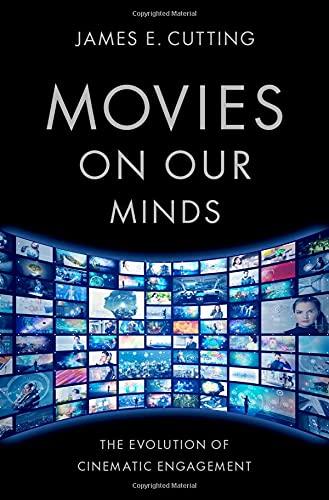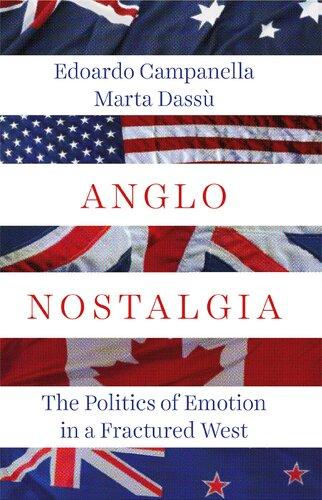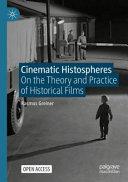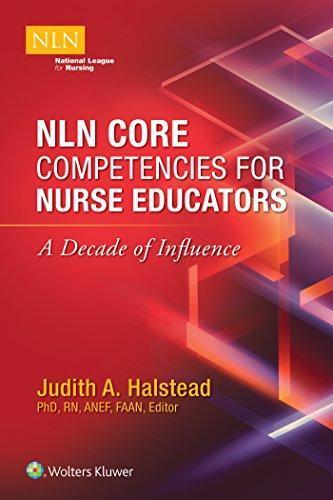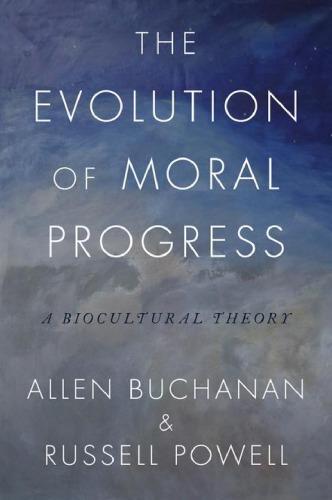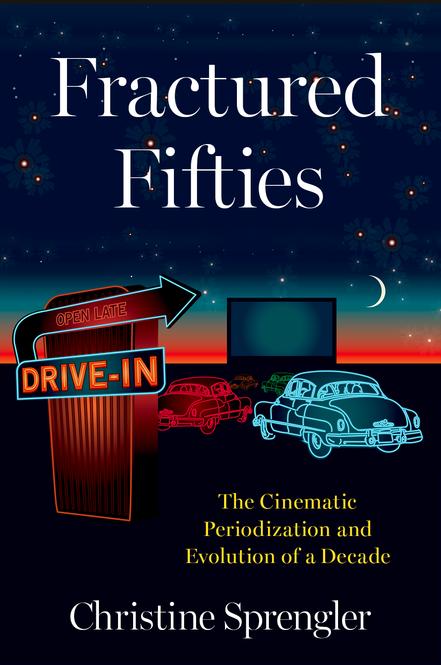Fractured Fifies
Te Cinematic Periodization and Evolution of a Decade
CHRISTINE SPRENGLER
Oxford University Press is a department of the University of Oxford. It furthers the University’s objective of excellence in research, scholarship, and education by publishing worldwide. Oxford is a registered trade mark of Oxford University Press in the UK and certain other countries.
Published in the United States of America by Oxford University Press 198 Madison Avenue, New York, NY 10016, United States of America.
© Oxford University Press
2023
All rights reserved. No part of this publication may be reproduced, stored in a retrieval system, or transmitted, in any form or by any means, without the prior permission in writing of Oxford University Press, or as expressly permitted by law, by license, or under terms agreed with the appropriate reproduction rights organization. Inquiries concerning reproduction outside the scope of the above should be sent to the Rights Department, Oxford University Press, at the address above.
You must not circulate this work in any other form and you must impose this same condition on any acquirer.
CIP data is on fle at the Library of Congress
ISBN 978–0–19–006735–9 (pbk.)
ISBN 978–0–19–006734–2 (hbk.)
DOI: 10.1093/oso/9780190067342.001.0001
Paperback printed by Marquis Book Printing, Canada Hardback printed by Bridgeport National Bindery, Inc., United States of America
For Jackson and Evelyn
List of Illustrations
2.1 Fencing in front of an automated orchestra, High Treason (1929) 51
2.2 Giant “televisor” broadcasting to the city, Te Tunnel (1935) 60
3.1 Country kitchen in Revolutionary Road (2008) 76
3.2 Frank (Leonardo DiCaprio) approaching his car in Revolutionary Road (2008) 77
3.3 Mrs. Mayers’s (Karimah Westbrook) “stoic non-reaction” in Suburbicon (2017) 83
3.4 Gracie (Melody Hurd) and Livia “Lucky” Emory (Deborah Ayorinde) in Tem (2021) 92
4.1 Te “Frosty Palace” diner in Grease (1978) 111
4.2 Danny (John Travolta), Sandy (Olivia Newton-John), and a Jukebox in Grease (1978) 112
4.3 Wink (Ian McClaren), Benny (Benjamin Barrett), and Georgie (Rene Rosado) in Badsville (2017) 116
4.4 Jennifer Greenburg, Te K-Wals, Itasca, Illinois, 2004 120
5.1 Hal King’s (Tyrik Ballard) performance at Madame Quickly’s club in Hal King (2021)
5.2 Kat French (Sharae Moultrie) in Hal King (2021)
5.3 Nurses lined up for execution in “Meet Me in Daegu,” Lovecraf Country (2020)
5.4 Joseph McCarthy and Edward R. Murrow (David Strathairn) in Good Night, and Good Luck (2005)
5.5 Dorothy Vaughn (Octavia Spencer), Mary Jackson (Janelle Monáe), and Katherine Johnson (Taraji P. Henson) in Hidden Figures (2016)
6.1 “Hail Caesar: A Tale of the Christ” movie in Hail, Caesar! (2016)
6.2 Mia (Emma Stone) and Sebastian (Ryan Gosling) in La La Land (2016)
6.3 Sylvie (Tessa Tompson) in Sylvie’s Love (2020)
6.4 Carol (Cate Blanchett) standing in a doorway in Carol (2015)
6.5 Carol (Cate Blanchett) and Abby (Sarah Paulson) in Carol (2015)
7.1 Te Boatwrights in Bastard Out of Carolina (1996)
7.2 Te Cadillac El Dorado in Te Refecting Skin (1990)
7.3 Church basement dance in Brooklyn (2015)
7.4 Dinner at the boarding house in Brooklyn (2015)
7.5 Te clouds part for the Maxsons in Fences (2016)
7.6 Te Maxson home and backyard in Fences (2016)
Acknowledgments
I suspect that what follows here will, at times, read as a somewhat unconventional set of acknowledgments, though perhaps fttingly so, given the challenging circumstances of the last few years. Tis book did begin life in a fairly typical fashion, which is to say far too long ago and piecemeal as part of various essays and conference presentations, ones that tested several possible ways into the material at hand. However, as I note in the introduction, I kept getting distracted by other possible trajectories, fnding it hard to commit to the project that I had truly wanted to pursue now more than twenty years ago. In some respects, I’m happy it took this long, for the potential case studies kept coming in droves, becoming ever richer and more interesting. Te initial research phase also followed an expected course, with test runs at conferences and I thank the panel and session participants at SCMS and Film and History over the years. Some of those papers evolved into essays mined here and I deeply appreciate the advice of the editors of various collections in which they appeared: Oliver Gruner, Peter Krämer, and Matthew Leggatt. Teir insightful and expert feedback was of tremendous help, and I am sincerely grateful to them.
I also want to mention, at the very outset, what an incredible privilege and honor it has been to work with Norman Hirschy at Oxford University Press. I have received nothing short of the strongest possible support and genuine encouragement for the duration of this process. From astute and incisive comments at the proposal stage to reassurance and understanding throughout the pandemic, this project would not have been completed without Norm’s committed attention and kindness. I am beyond lucky to have benefted from this collaboration; it has been a true delight to work with Norm every step of the way. Norm also lined up two of the most generous and brilliant anonymous reviewers for this manuscript, and I cannot begin to thank them enough for the time and care they devoted to providing enormously detailed comments and for reining in my tendency toward fippant disregard for academic seriousness. (Yes, I knew I would have to take out that “squirrel” bit!)
Much support also came from my institution in the form of fnancial awards, research assistance from my phenomenal graduate students, and the steadfast moral support of magnifcent colleagues. Te Faculty of Arts and Humanities J.B. Smallman Fund as well as the Graham and Gale Wright Distinguished Scholar award provided both a grant and, in the case of the latter, a course release that enabled me to complete this manuscript. Te expert research skills of Ira Kazi, Masha Kouznetsova, Katie Oates, Anahi Gonzalez Teran, and Zsofa Agoston Villalba unearthed new case studies and compelling research for me and I am exceptionally appreciative of their always enthusiastic aid. I have the pleasure to work with some incredible colleagues and good friends and want to note their continued support and role in sustaining an amazingly congenial and hard-working department. Tanks especially to Kirsty Robertson, Sarah Bassnett, and Kelly Wood for sporadic escapes into the social world, Cody Barteet, Linda Meloche, and Meghan Edmiston for always hilarious exchanges, and all my other wonderful colleagues: Soheila Esfahani, Sky Glabush, John Hatch, Joy James, Tricia Johnson, Patrick Mahon, David Merritt, Christof Migone, Alena Robin, and Daniela Sneppova.
Because this project was so long in the making, I need to acknowledge those who shaped my earliest thoughts on the topic and who guided me through its initial stages and trajectories, mentors who have now become dear friends: Laura Mulvey, Bridget Elliott, and Tony Purdy. Indeed, given the circumstances under which this was written I owe my friends, both old and new, my deepest gratitude for truly sustaining support, sometimes in the form of a hike or walk, a phone call or beer over zoom, a socially distanced visit, or a canoe camping excursion deep into the backcountry: Pippette Eibel, Debra Nousek, Donna Sasges, Sandy Smeltzer, Daniel Morgan, Connie Mackenzie, Sharon Wei, Susanna Pearl, and Laura Melnyk Gribble. A special thanks to Clint, Larry, Fred, Tim, Tony, Bob, Adam, and Ash—the logging crew of Dagger Lake Access Road—for stopping to chat on their way to work every morning, ofen before dawn, while I walked my dogs as far into the forest as I could manage, hikes that were absolutely essential to the completion of this project. I talked to them more than anyone else “in person” over these last few pandemic years and always appreciated their bear sighting reports, something else that I’m quite certain made it possible for me to fnish this book.
Writing a book during a pandemic with young children at home and an elderly mother under my care was certainly a challenge. But their unwavering
support is also the reason it is now fnally fnished. My mother has always wondered why on earth I do this (though her language, even at ninety years of age, is far more colorful than I’m likely permitted to print here), but nevertheless understands my love of research and writing. My partner, Devin Henry, knowing full well himself what is necessary to fnish a book, helpfully aided and abetted my periodic escapes to our cabin deep in the woods to write. My amazing children, Evelyn and Jackson, are my inspiration and very reason for being. Teir curiosity, creativity, energy, and confdence when it comes to loving what they do (wolves and mice, respectively) are the best sustenance. In the acknowledgments for my Master’s thesis (arguably the frst iteration of this project), I thanked the companionship of my pet rodents, so it only seems ftting I continue the tradition, though this time my gratitude must extend to companions slightly higher up the food chain, my dogs Tea, Echo, and Sparrow. In short, my family, both two- and four-legged, deserve my most heartfelt gratitude.
Permissions
Parts of Chapter 4, “Te Jukebox Fifies” have appeared in “Grease, the Jukebox Fifies and Time’s Percolations,” in “Grease Is the Word”: Exploring a Cultural Phenomenon, ed. Oliver Gruner, Peter Krämer, and C. Sprengler (Anthem Press, 2020), 113–130.
Parts of Chapter 5, “Te Cold War Fifies” and Chapter 6, “Te Retromediated Fifies” have appeared in “Midcentury Metamodern: Returning Home in the 21st Century Nostalgia Film,” in Was It Yesterday? Nostalgia in Contemporary Film and Television, ed. Matthew Leggatt (SUNY Press, 2021).
Introduction
Tere is an unusual centenary on the horizon—one that I’m sure will go unheeded. Not that it deserves an ofcial commemoration. Nevertheless, it is perhaps surprising and even novel enough to warrant mention. In a few years we might feel the inclination to turn up the hi-f and clink our martini glasses in a toast to one hundred years of cinematic representations of the 1950s. To the best of my knowledge, this centenary ought to be celebrated in 2024 to mark the 1924 release of a rather terrible science fction flm, Te Last Man on Earth. Set in 1950, it imagines a future in which all but one man is killed of by the dreaded disease “masculitis.” Other cinematic incursions into a future 1950s followed in the late 1920s and mid-1930s. Ten, in the 1950s, prospection gives way to self-mythologization and, by the early 1970s, retrospection when the 1950s surges as a subject of cinematic—and other— fascination. Te 1950s has since sustained flmmakers’ interest, becoming the focus of more than seven hundred works of flm and television, with more than one hundred English-language screen fctions released since 2015.
What follows is not a catalogue raisonné of these releases. I take a good number into account in order to categorize the general tendencies apparent in this vast corpus, but then concentrate on a selection of dominant tendencies exemplifed by flms saturated with analytical richness and social or political signifcance. Some of these are nuanced interventions into postwar history, while others are deeply problematic in several regards. I briefy consider a few examples from television, primarily “quality” long form series, and make mention of a few other representational and leisure practices that summon the 1950s. My eforts, however, are concentrated on the cinema. I do so to present a two-pronged argument that (1) cinema has helped defne the 1950s by contributing in considerable and meaningful ways to the process of periodization and thus a general conception of the decade, and (2) cinema has fractured our sense of the 1950s. It challenges a reductive and fairly cohesive set of tropes with a complex amalgam of representations that also intervenes in debates about historiography, historicity, cultural memory, mediation, nostalgia, and periodization. In other words, cinema has fractured our sense
Fractured Fifties. Christine Sprengler, Oxford University Press. © Oxford University Press 2023. DOI: 10.1093/oso/9780190067342.003.0001
of the 1950s, yielding in the process a series of 1950s types or kinds as well as a wealth of critical insights into the past(s), present(s), and relationships between them.
Tese are easy claims to make if our purview includes the global corpus of flms devoted to the 1950s. From Ayla: Te Daughter of War (Turkey, 2017) to Rahenge Sadaa Gardish Mein Taare (India, 2017), the regional perspectives and range of cinematic practices yield a deeply variegated portrait of that decade. However, the focus here is on the specifcally American 1950s, long aligned in numerous discursive registers with a simplistic, politically infected, dominant construct of white, middle-class prosperity and mores. Indeed, there is a special relationship between the two—America and the 1950s—long nurtured by social conservatism, consumer capitalism, and insular foreign policy. But the privileged status of this entwined object is also maintained by progressive forces that regularly summon it for the purpose of demystifcation or to spur activism in the present. Te 1950s has long functioned as a foil to the 1960s and as a carefully manufactured construct invoked repeatedly during the 1970s, 1980s, 1990s, and throughout the twenty-frst century for a variety of ends.
During each of these decades, scholars, journalists, and cultural critics have felt compelled to refect on the prevalence of the 1950s in their own contemporary moment. My frst attempt to come to terms with this practice was during the late 1990s. I wanted to take stock of how quintessentially postmodern flmic practices engaged—through pastiche, parody, self-refexivity, and so on—with the 1950s. My concern was with the aesthetic trappings of a cinematic practice that generated strident critiques of the past and mythic representations of the postwar period. However, this morphed into a concern with how an American 1950s accrued vitality in British flm and television productions invested in Tatcherism and Americanization. I returned again to this phenomenon ten years later but abandoned any sole focus on the 1950s for nostalgia itself, keeping the 1950s in suspension throughout, but primarily insofar as it helped articulate a brand of cinematic nostalgia. Here’s hoping the third time’s a charm.
Te 1950s has surged with astonishing force at various junctures over the last half century. Such moments of cultural and political investment in the postwar era are, of course, heavily determined by the desires, anxieties, ideologies, technologies, and whims of the contexts in which they surface. Terefore it is necessary to explore how contextualizing factors shaped the 1950s in diferent ways, and especially how cinematic representations
spearheaded, challenged, or intervened in our cultural memories of it. Although I briefy chart the respective evolutions of the dominant 1950s types at issue by considering the vicissitudes of the 1970s, 1980s, or 1990s that gave them form, I privilege recent releases. Specifcally, I account for how twentyfrst-century cinema advances these earlier modes of representing the 1950s and cultivates their aesthetic and narrative strategies for the purposes of engagement, veneration, critique, or departure.
Indeed the examples to which I give the most attention have been released since 2010, with a majority dating from 2015. As such I foreground the 1950s types most relevant to our contemporary moment rather than those quantitatively dominant. Tis methodology requires regard for two facets of the present of this writing that are imbricated with one another and which, independently, hold a degree of explanatory power for the examples I pursue: (1) the continuing shifs away from postmodern precepts as the determining logic for cultural production and (2) the political context entrenched— though by no means originated—by the 2016 presidential election. Te frst has infected the afective character of cinematic representations of the 1950s while the second is responsible for, among other things, its latest surge. I ofer a cursory sketch of each here but aim to complicate and expand on them in the chapters that follow.
From Post- to Metamodernism
Around the turn of the twenty-frst century, we started to hear a rumbling about the death of postmodernism. Much of it was hyperbolic and required the homogenization of an ofen contradictory set of discourses. Indeed our shif away from certain postmodern tenets might be described better as a gradual one—in turns incremental, torrential, incomplete, and tainted by a profusion of relapses. Many of its aesthetic strategies remain prevalent throughout visual culture today and show few signs of dissipating in the face of something new or a return to things even older. Intertextuality continues to abound in popular visual culture, and in the typically postmodern way that efaces reverent connections to source materials, favoring instead explorations of the self-refexive or ironic charges of diferent representational practices.
We also continue to witness repeated attempts at constructing deliberately archaic images, a variant of pastiche that seeks to recreate the look of
old media forms. From the televisual black and white of Pleasantville (1998) that transforms into a polished Technicolor to the monochromatic newscast aesthetic of Good Night, and Good Luck (2005), the revival of these visual templates has increased, especially over the last twenty years as new technologies render such pictorial returns to the past more convincing.1 Tis approach continues to be popular in the recent releases considered here. However, since the turn of the twenty-frst century, it also has been mobilized in the service of otherwise more deferential approaches to the past and not as part of a program of postmodern parodic indiference that questions whether the past was even knowable in the frst place. Tis is not to suggest that incisive political or social critique was not also at the heart of several quintessential postmodern flms. Walker (1987) or, again, Pleasantville, like much postmodern cinema, also sought to engage with “real” historical problems. Nor is it to suggest that such a postmodern vein could account for all historically oriented flms produced since the 1970s or that all of these flms addressed history in a specifcally postmodern way. Tis is clearly not the case.
A diferent afective infection to some of the more recent works seems to preserve certain postmodern aesthetic tendencies while it fuels a greater urgency in reporting on truths about the past and recuperating individual and collective experiences that were once elided. I am interested in this cohabitation of tendencies here. In my search to give it form, I turn to Timotheus Vermeulen and Robin van den Akker’s concept of metamodernism.2 Briefy, metamodernism is characterized by an oscillation between modern enthusiasm and commitment and postmodern irony and detachment but, in the end, seeks to replace the latter’s penchant for deconstruction with an investment in reconstruction, sincerity, and authenticity.
Examples include the cinema of Michael Gondry and Wes Anderson that “attempts to restore, to the cynical reality of adults, a childlike naivety” or the romantic conceptualism of artists Tacita Dean and Mona Hatoum, who inject a sentimental charge into the calculated, rational conceptualism of earlier years.3 Vermeulen and van den Akker also note a spike in curatorial projects foregrounding a neoromantic sensibility and thus a structure of feeling that comes closest to exemplifying metamodernism’s play of opposites. Tey cite Olafur Eliasson’s “Te Weather Project” (2003) as an instance of the “commonplace ethereal,” Catherine Opie’s investment in the “quotidian sublime,” and architectural designs by Herzog and De Meuron that negotiate between “culture and nature, the fnite and the infnite . . . a formal structure, and a formalist unstructuring (as opposed to deconstruction).”4
Troughout this study I will return periodically to metamodernism, advancing—and sometimes retracting—the analytical power of its features in relation to (some of) the cinematic tendencies at work in my corpus. My intention is not to use metamodernism as a grand contextualizing force within which to situate cinema of the twenty-frst century. I do not wish to claim we are living in some kind of “metamodern” world. Instead, I extract those contentions I fnd instructive for making sense of certain flms. At the core of metamodernism—if indeed there is one—is a desire to grasp something meaningful, to move forward, to believe in the virtues of hope, and to be genuinely moved. Tis smacks of nostalgia for a certain strain of modernity, and that is defnitely part of it. Again, the cinema of Wes Anderson, touted by Whitney Crothers Dilley as “hyper-nostalgic,” comes to mind.5 However, Vermeulen and van den Akker warn that the reintroduction of these “modern” virtues should be framed by a Kantian as-if-ness. Tat is, our cultural expressions ought to proceed as if these things were possible, all the while fltering our eforts through a (postmodern) skepticism that recognizes the pitfalls of doing so. In other words, we ought to see the ideals and possibilities inherent in what we esteem or the pasts we cherish, but recognize the limitations and complexities that necessarily remain in our eforts to pursue and represent them. Still, this seems to overstate the way in which postmodern strategies supposedly efaced meaning, feeling, and truth. However much irony and parody may have reigned, their prominence did not occlude an investment in a kind of deeper afect or historical reality even in the most quintessentially postmodern flms.
Nostalgia for the 1950s (Again) in Contemporary Political Discourse
Postmodernism’s obituaries may already be archived, but its ghosts continue to haunt cultural and political life in the United States. Tey do so in frighteningly strange ways. For instance, we are currently at a point where the relativity of the truth expounded by proponents of postmodernism— invested in challenging certain power structures, entrenched metanarratives, and histories marred by exclusions—has been put to use in the service of ends very much at odds with the ethos of the proponents of postmodernism. We are witnessing attempts by the center—of capital and politics—to once again erase the experiences of the margins, taking away any powers that
might have been accrued by appealing to a bastardized relativity ascribed to postmodernism. From the term “truthiness”—ofered by Stephen Colbert in 2005 to refect the absurd pronouncements by George W. Bush—to Kellyanne Conway’s “alternative facts” in 2017 to describe the debacle around the size of Donald Trump’s inaugural crowds, to bizarre rejections of scientifc discoveries throughout the Covid-19 pandemic, now it is the Right adopting postmodern challenges to truth as a tactic to bolster their power at the expense of many still-disenfranchised groups. In fact, the unabashed spewing of lies that marked Trump’s presidency on everything from immigration to the pandemic has lef many with mouths agape and a new fervor to defend the importance of truth, fact, and data. Tis questioning of truth and its subjectivity has resulted in much hand wringing about the extent to which Donald Trump was a “postmodern” president and thus the extent of postmodernism’s continuing relevance for our present. Articles to that efect abounded afer his inauguration. Writing in the New Republic Jeet Heer turns to Fredric Jameson and others to show how closely aligned Trump or, rather, Trump-as-cipher is with certain postmodern forces:
Tese writers describe a world where the visual has triumphed over the literary, where fragmented sound bites have replaced linear thinking, where nostalgia (“Make America Great Again”) has replaced historical consciousness or felt experiences of the past, where simulacra is indistinguishable from reality, where an aesthetic of pastiche and kitsch (Trump Tower) replaces modernism’s striving for purity and elitism, and where a shared plebeian culture of vulgarity papers over intensifying class disparities. In virtually every detail, Trump seems like the perfect manifestation of postmodernism.6
Heer continues by surveying the “propagation of fctions,” the multiple and dubious claims to reality, the many moments of simulation (Trump as “simulacra of a businessman”), and the economics of late capitalism that made a Trump presidency possible. Truth and facts remain at the heart of such assessments, with writers from Time, Te Globe and Mail, Te New York Times, and the BBC asserting the death of truth and objectivity when it is really starting to matter in the face of catastrophic changes to our climate, the toll of Covid-19, and horrendous assaults on voting rights. In some ways, however, this characterization of Trump’s presidency as postmodern goes only so far. Perhaps it is best seen as a surface alignment, one that starts to falter the deeper we dig.
Tis is not to say that the alignment between Trump and postmodernism isn’t productive. It is. Especially if we take time to unpack Heer’s brief description of nostalgia in order to see how nostalgia itself is being understood. As cited above, Heer writes that “nostalgia (Make America Great Again) has replaced historical consciousness or felt experiences of the past” [emphasis added]. Tis conception of nostalgia is grounded in Jameson’s view that “History” proper has been replaced with the history of nostalgic aesthetic styles. Pastiche and parody have efaced meaningful connections to the past, leaving in their place inauthentic longings manufactured by the desire economies of consumer culture. For instance, thanks to cinema, the 1930s and 1950s have been replaced by a general sense of pastness, or what Jameson calls “1930s-ness” and “1950s-ness.”7 Tis pastness is depthless, ahistorical, and predicated on little more than the surface trappings of style and fashion. Tere are several problems with this perspective that Heer replicates. Many scholars, starting with Linda Hutcheon, have demonstrated the faults with Jameson’s own nostalgia for the possibility of an unproblematic access to history and, particularly pertinent here, the idea that aesthetic strategies cannot generate genuine feeling. Nostalgia is, in part, about a felt experience of the past. Such a feeling can still be incredibly strong even if the trigger for it is mythic or invented. Likewise, such triggers can originate from the worlds of style and fashion which themselves, contra Jameson, have strong links to actual material histories and realities.
As defning as Jameson’s account of postmodernism is, his explanation of postmodern nostalgia, adopted by Heer, does not help us see the powerful ways in which this sentiment has been harnessed by the Right. I would argue that a certain kind of “historical consciousness” and a “felt connection to the past” are precisely what the Right’s nostalgia mobilizes and feeds on, and it does so in a way that alternates between myth and reality. Te campaign slogan “Make America Great Again” is, of course, nostalgic in structure. It implies that the present is somehow defcient and that the past is much preferred and thus the model for future action. But the past that was once “great” in the minds of its adherents, is one steeped in both historical reality and myth and one multifaceted enough that diferent constituencies can fnd their own distinct nostalgic longings potentially fulflled by its promises. While expressions of this nostalgia may be lacking the critical currency of their postmodern antecedents, like many instances of postmodern nostalgia they are nevertheless also deeply indebted to the 1950s. It is this form of 1950s nostalgia to which I now turn in order to make a case for the
persistence of the postwar past in political discourse and to provide a sketch of the context in which many of the flms surveyed here are produced and with which they engage.
For many observers, nostalgia was a key ingredient in the election of Trump. His victory was secured by what Robert P. Jones describes as the transformation of evangelical “value voters” into “nostalgia voters.”8 Although this suggestion of transformation obscures the way particular evangelical “values” have been part of a much longer Republican campaign grounded in nostalgia, it certainly highlights the efectiveness of how “Trump’s promise to restore a mythical past golden age—where factory jobs paid the bills and white Protestant churches were the dominant cultural hubs—powerfully tapped evangelical anxieties about an uncertain future.”9 Jones’s observations are based on surveys that demonstrate just how strong the pull of nostalgia for the 1950s is among the white evangelicals who voted Republican. It was a very deeply felt connection that spoke to the essence of their identities. For instance, immediately before the 2016 election, the Public Religion Research Institute (PRRI) “American Values” poll found what was at stake were two irreconcilable visions of America, dependent on whether or not respondents thought that the 1950s were worse or better than the present.10 Te unsurprising results, that white men preferred the 1950s to the present while women and people of color preferred the present to the 1950s, were covered widely in the media. Jones explains that people were not motivated by “concrete policy issues,” but by the way the “campaign painted a bleak portrait of America’s present, set against a bright, if monochromatic, vision of 1950s America restored.”11
Nancy Letourneau of the Washington Journal reinforces these points about nostalgia through her contention that:
[T]hose who argue over whether Trump supporters were motivated by racism or economic anxiety continue to miss the point. Te issue at play was more broad than either of those assumptions capture. It was about nostalgia for the mythical golden age of the past that, fueled by anger, became a defense of “the divinely ordained way things are supposed to be.”
Included in that stew are the intertwining fears about changing demographics, immigrants, Muslims, women, LGBTQ, globalization, the impact of the Great Recession, the decline in religious afliation and racism. In other words, nostalgia voters (i.e., confederate insurgents) were reacting to the perceived changes in their established social order.12
But these nostalgia voters, fearful and resentful of the slight gains made by marginalized communities, were responding to more than just a vision of a “mythic golden age.” Teir “historical consciousness” is fueled by a “deeply felt” connection to real historical circumstances that defned the 1950s, facets held in abeyance in the subconscious of even some of the most reductive nostalgic tropes. Te diferent constituencies making up the nostalgiavoting bloc can latch onto much about the historical reality of the 1950s. White supremacists are drawn to the 1950s because the United States was still deeply segregated and overtly anti-Semitic, and racially motivated crimes could go unpunished. Of course, this remains the case still today despite a series of legal victories, some of them dating to the 1950s. Economically disenfranchised, under- and unemployed white men yearn for the 1950s because they were all but guaranteed a job and the social mobility and prestige that came with it. Social conservatives gravitate toward the 1950s because those years comprised the last decade before women’s rights and gay rights took hold in any kind of concrete way that challenged the power held by the patriarchy and heteronormativity. Te religious right also esteems the 1950s for these reasons and because the 1950s represented a time when “White Christian America” defned the core, normative culture for the nation. Patriots of many stripes also could be proud of America’s unparalleled military might on the international stage; never mind the global human cost at which this strength was achieved.
Tis appeal to the 1950s by Republicans is not by any means new. It is part of a long-standing political strategy dating back to Ronald Reagan’s campaigns in the 1980s. Ten already, the 1950s was used as a partisan pawn, celebrated as a nostalgic object by the Right while condemned as such by the Democrats. Daniel Marcus tracks Reagan and George H. W. Bush’s rhetorical uses of the 1950s and, later, Bill Clinton’s own brand of decade nostalgia, one that feted the progressive social movements of the 1960s as an antidote.13 In some ways, Barack Obama’s “yes we can” and “hope” slogans that looked more forward than back stand as a rather metamodern injection into a near half-century of nostalgia-infused presidential campaigns. In fact, Vermeulen and van den Akker began their essay on metamodernism with an excerpt from Obama’s “Yes, we can change,” speech to the Democratic national assembly in January 2008.14 With the presidential election of 2016, there seemed to be a return to business as usual—almost. Defenses of the postwar past during this contest were mounted with a high degree of aggression and hyperbole. Moreover, there was little attempt by some constituencies to hide
their relish of 1950s inequities behind an alibi of nostalgia for “kinder, gentler times.” Tough this, too, is not entirely new. For even during the Reagan and Bush Sr. years that made much use of seemingly benign televisual images of the postwar years, certain repressions of the 1950s were surreptitiously highlighted in ways that appealed to their supporters.
Te reality of the circumstances of the 1950s was also in part responsible for the frst eruption in the nostalgia economy of the 1970s. Tese circumstances represented what was lost by the gains made through 1960s social activism. Te racism, misogyny, and homophobia that fueled the nostalgia economy were not ofen named as such. Instead, this nostalgia was seen as induced by simply a “better” time, allowing enthusiasts of this era to disavow their bigotry. Tere were other driving forces of this nostalgia as well, but however much at a remove from these ideological triggers they seemed, they remained imbricated with them. For instance, a decidedly consumerist bent favored the nostalgic appeal of the material and visual culture of those who had come of age during the 1950s. Fashions and toys tapped into the nostalgia market and became indispensable to the process of mystifcation. However, the signifcance (in the sense of signifying power) of these products was bestowed, in large measure, by narrative forces that erased the experiences of those on the periphery. Poodle skirts and hula hoops, for example, were contextualized by the blindingly white worlds in the advertisements, magazine covers, and television programs in which they reappeared. Moreover, these nostalgic objects circulated in a consumerist economy with structural injustices that continued to disadvantage many in the 1970s: women could not have a credit card in their name, and people of color continued to face overt discrimination in many fnancial sectors.
Tose occupying the purported center of American culture—white, middle-class, heterosexual, Christian men—were also the subjects of mystifcation, some specifc to their station (e.g., patriarchal or hegemonic masculinity) and others shared—though experienced diferently—by their neighbors on the periphery. One particularly powerful force to which all were subject was the Red Scare. Tis had implications reaching far beyond political alliances and even the end of the House Un-American Activities Committee’s ofcial mandate. McCarthyism, among other factors, generated a lot of anxiety in the postwar era. And as Alan Nadel observes, it was an era marked by great difculty reconciling an unhappy citizenry with the imperative to be happy, to unabashedly celebrate the unprecedented wealth and security of 1950s America. A pithy section heading spells out the implications of this
imperative: “Not being happy is not being normal is being un-American.”15 Nadel thus reveals the broad disjuncture between a discontented American populous that coped poorly with massive societal shifs while being forced to live happy lives to “demonstrate that the American way of life, from day to day and year to year, was the most attractive in the world.”16 As he further explains:
Achieving normality, however, was virtually impossible. Perhaps the biggest absurdity of 1950s normativity was the fact that the “norms” of Cold War America, like its postwar prosperity, were totally anomalous. Most simply, Americans could not become cheerful exemplars of the joys of capitalism by returning to normal life because from a historical, social, technological, and especially demographic perspective, nothing about postwar America was normal.17
Tis demand to be happy goes a long way to explain the proliferation of those ridiculously uninhibited expressions of glee, if not outright jouissance, in advertising that have become the fodder for contemporary memes. It also explains those beaming smiles in 1950s domestic sitcoms, the model for appropriate postwar familial behavior. In this way, the era seems to have destined itself to become future fuel for nostalgia and parody.
When the Right alludes to a mythic golden age, this is the image that most ofen comes to mind. Indeed media coverage of Trump’s campaign and presidency have all but permanently entrenched the 1950s as his preferred object of nostalgia despite his own caginess when it comes to committing to an era. For instance, on the eve of the 2016 election, Dana Nuccitelli observed that “Donald Trump’s goal is to make America Mad Men again by reversing the progress we’ve made over the past half century and returning the country to a 1950s era-style society dominated by white men.”18 She itemizes the litany of injustices against women, people of color, and science, commonplace and institutionalized in 1950s—and the AMC television drama—that Trump and his supporters wish to reinstate. Whereas Nuccitelli concentrates on the misogyny and white supremacy that Trump seeks to normalize, writing in Te Atlantic more than a year earlier, Ester Bloom unpacks the consequences of the “Make America Great Again” slogan by recounting the nostalgic appeal of the privileges enjoyed by white, heterosexual, middle-class men during the postwar years. Her aim, too, is to pinpoint the “golden era” to which Trump’s vague rhetoric alludes, and she suggests that “[r]egardless of when it ended,
it would not be unfair to use the ’50s as shorthand for this now glamorized period of plenty, peace, and the kind of optimism only plenty and peace can produce.”19 Te point of her piece, however, is to remind his supporters that such plenty was a direct consequence of big government, strong unions, and high taxes. Danielle Fernandez, who seemed to predict a Republican win when most thought it impossible, also argues that “lacking as it does an historical referent, the era of American greatness the Trump campaign heralds as ideal—perhaps the one that will come (again) when Trump ascends— remains unclear, but most people who are moved by this myth likely imagine the 1950s.”20 To succeed, however, the voting public must frst be convinced to “buy into his 1950s-nostalgia campaign.”21 Admittedly, this is not too difcult to do for some constituencies. As noted above, 1950s nostalgia campaign has been waged by various political, economic, and social interests for nearly ffy years, and Trump certainly isn’t the frst—or likely the last—political candidate to invoke the 1950s in this way.
Afer the 2016 election, the 1950s became even further entrenched both in Trump’s rhetoric and in the journalistic responses to his presidency. In Fire and Fury, Michael Wolf’s best-selling, gossipy exposé, the 1950s returns again and again as a frame to make sense of Trump and his actions.22 Wolf’s aim may have been to spin a tantalizing narrative around the daily absurdities originating from the White House in 2017, but his frequent alignments of Trump with the 1950s reached a vast readership and thus did much to cement this connection. It was a connection also repeated in more studied refections. Writing in Foreign Policy, Charlie Laderman reminds us that Trump was a child of the 1950s and “just as his domestic agenda is a nod to that era’s vision of the American Dream,” his view of America’s role in the world refects a “nationalist critique of American liberal internationalism that might have been dormant in policy circles since the 1950s but which has never really gone away.”23 But it is a view without nuance and without knowledge of the specifc historical circumstances that frst generated this perspective or sustained it. Instead, promises of domestic and foreign policy remained extremely vague.
However much such vagueness was a byproduct of a mind with little to no grasp of history, this noncommittal approach continues to work to the Republican’s beneft, permitting followers to fll in the blanks with their own nostalgic object. But this past is not without some grounding. It fnds expression through a series of tropes and ideas that we recognize as part of a national imaginary, to be celebrated or condemned, infected or developed,
depending on one’s political persuasion. And regardless of use, each iteration simply serves to reinforce the centrality of the 1950s in the broader cultural consciousness.24 Tese reductive tropes have their roots in the 1950s, emerging from postwar television: the Leave It to Beaver-esque, white, patriarchal, middle-class family gathered around the dinner table in their suburban bungalow. Tey emerge from advertising: a stylish, young couple swooning over the latest tail-fnned car. Sometimes this car is parked at a diner in a nod to an emerging youth culture. Sometimes it is parked against the backdrop of a rocket launch site, suggesting that its technological supremacy and futurity are inherited from America’s advances in the space race.
Te Fractures
Taken together, these reductive visual tropes coalesce into a simplifed impression of the 1950s, one that has enjoyed much currency and power in a range of contexts from politics, flm, television, and advertising to the broader nostalgia economy. But however simplifed it may seem, ofen consciously so in an efort to ascribe an idyllic simplicity to the period itself, this vision also holds deep within it a series of ofen unspoken contradictions and questions. If we excavate the history of each trope and subject its components to a close analysis, fractures start to show. In so doing, we fnd ways to access the nuances of the historical realities of the decade and especially its countercultural forces that do not ofen register on the surface. Other fractures also start to show if we track, chronologically, the uses of diferent 1950s types through the 1970s, 1980s, and up to the present. Te seeming dominance of white suburban domesticity as defnitive of the 1950s begins to erode, opening up space for competing, complicating, and more densely layered versions of this decade.
In other words, this book ultimately is about how cinema helped fracture—in the sense of splintering and fragmenting into parts—what was once a somewhat coherent construct into a multifaceted collection of constituent types despite the unending pressure from certain political circles to the contrary.25 Taxonomies of this nature certainly have their pitfalls, some of which bear similarities to those sufered by periodization itself, as detailed in Chapter 1. Classifcatory schemes end up privileging various features at the expense of others, writing of as marginal what through a diferent lens is vitally important or defning. Tey also artifcially reinforce boundaries that

